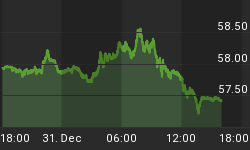In nominal terms, the U.S. April trade deficit narrowed significantly to $58.5 billion from March's downwardly revised gap of $62.4 billion. In price-adjusted terms, the trade deficit in goods also narrowed sharply in April to $54.9 billion from March's $59.6 billion. So, this more-than-expected narrowing in the trade deficit ought to cause forecasters to bump up their secondquarter GDP forecasts, right? Wrong. Most of the narrowing in the deficit was the result of weaker imports, not stronger exports. In price adjusted terms, imports of goods fell 3.6% month-to- month, while exports fell 0.4%. If imports fell, then that means that some line-item of domestic demand was negatively affected because imports are part of consumer/business final spending or business inventories. Price-adjusted imports of consumer goods, including autos, fell 4.1% in April; price-adjusted imports of capital goods fell 1.2%. Yesterday, the Census Bureau reported that wholesale inventories of motor vehicles and parts declined 3.6% in April. This probably is related to the 4.6% decline in price-adjusted imports of motor vehicles and parts in April. In sum, rather than revising up one's GDP forecast on the basis of the narrower-than-expected April trade deficit, one might consider marking it down some of the components of domestic demand a couple of ticks.
As mentioned, price-adjusted U.S. exports of goods fell 0.4% in April. I keep hearing how strength in foreign economies are somehow rescue a U.S. economy that is experiencing a recession in housing, a sharp slowdown in the growth of consumer spending and corporations that are more interested in buying back their own shares than a few extra drill presses. Then I read my Reuters headlines this morning: "German industry output sees biggest fall in 7 years," "Japan machinery orders rise less than expected," "Canada adds fewer jobs than expected in May" and "Italy GDP growth slows as inventories contract." Central banks have been and will continue in the near term to raise their policy interest rates. With a lag, these interest rate increases will start to retard domestic demand abroad. And the slowdown in U.S. imports from the rest of the world will have a negative effect on foreign economies' export sectors. Look at the curve in the road ahead, not the straight-away you see in your rearview mirror!
















